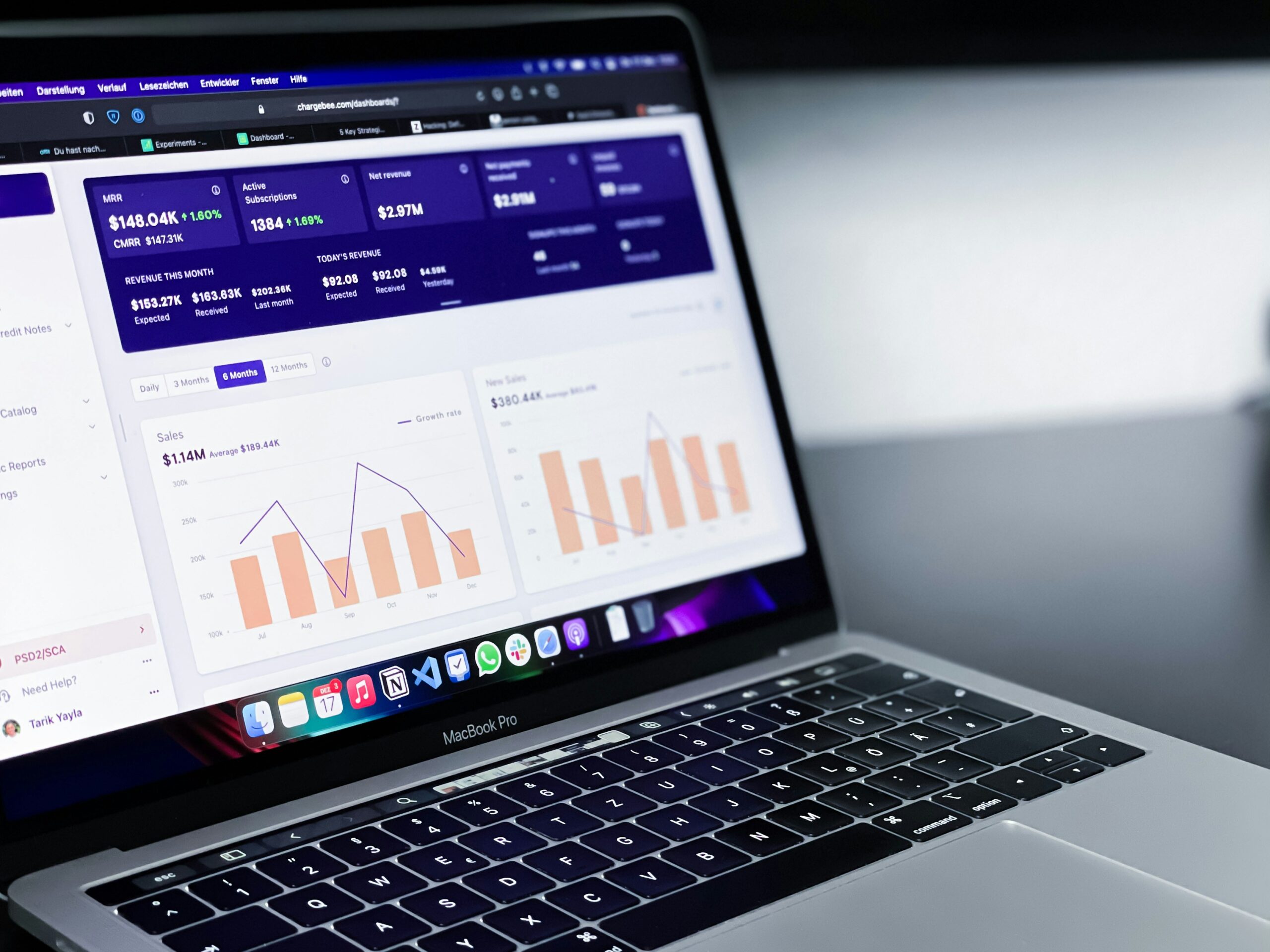In today’s competitive digital marketplace, optimizing an ecommerce website is essential for increasing traffic, enhancing customer engagement, and driving sales. A well-optimized online presence improves user experience and boosts conversions through streamlined navigation, compelling product pages, and an efficient checkout process. This article outlines practical techniques to elevate your ecommerce performance using data-driven strategies and modern web practices.
Key Takeaways
- Streamlined navigation and fast load speeds enhance user experience, reducing bounce rates and improving conversions.
- Optimized product pages with rich visuals, keyword-rich descriptions, and reviews influence purchase decisions.
- Simplified checkout flows and guest checkout options reduce friction and minimize cart abandonment.
- Strong SEO and content strategies using keyword research and link building increase organic visibility and sales.
- Mobile optimization with responsive design and fast-loading content supports higher engagement and return on investment.
Enhancing User Experience for Increased Conversions

A seamless user experience directly supports higher conversions on eCommerce platforms. Day by Day Digital specializes in crafting intuitive website designs that prioritize user navigation and engagement, ensuring customers can quickly find what they need and are more likely to complete a purchase. Streamlined navigation, mobile responsiveness, and quick load times all contribute to a smoother experience. These elements not only improve user satisfaction but also contribute to better search engine rankings. Optimizing user experience is foundational to achieving stronger engagement metrics and generating a higher return on investment across all digital marketing efforts.
Streamlining Website Navigation for Easy Product Discovery
An intuitive navigation layout minimizes confusion and encourages exploration. Clear menus and categories mirror buyer expectations, helping visitors find products with minimal effort. When navigation flows logically, it keeps users engaged longer, which benefits your search engine optimization efforts. Drop-down menus, breadcrumbs, and internal linking structures support better site hierarchy, making pages more discoverable by both shoppers and search engines. These enhancements create a smoother experience and reduce exit rates. In turn, consistent user flow increases the likelihood of conversions and improves keyword relevance across your site.
Optimizing Page Load Speed to Reduce Bounce Rates
Website load speed impacts both user satisfaction and visibility on search engines. Quick-loading pages lower bounce rates by capturing attention before frustration sets in. Tactics like compressing media files, minimizing code, and using efficient hosting solutions accelerate page performance. This contributes to better indexing in search engine results and aligns with technical SEO best practices. Additionally, faster pages enhance the user journey, especially on mobile devices, and support seamless transitions between product pages and checkout. Improved speed ultimately boosts conversion rates and strengthens overall digital marketing performance.
Implementing Mobile-First Design for Seamless Shopping
A mobile-first design approach ensures that your website performs effectively across all devices. Mobile shoppers expect intuitive navigation, fast load times, and easy-to-tap interfaces. A responsive framework adapts your site layout based on screen size, preserving user experience and promoting return visits. Well-placed calls-to-action, optimized images, and scalable fonts keep mobile users engaged. This not only satisfies mobile usability criteria for search engine optimization but also improves user retention. Prioritizing mobile functionality supports long-term revenue growth and positions your brand competitively in today’s digital marketing landscape.
Optimizing Product Pages to Drive Purchase Decisions

Every product page should guide the user toward a confident purchase. Key elements include compelling descriptions, clear visuals, and pricing details that reduce hesitation. Including targeted keywords improves search engine optimization and draws more traffic from high-intent search queries. A well-structured layout encourages buyers to explore options, helping increase average order value. Displaying availability and variations also ensures transparency, which reduces cart abandonment. These refinements improve both user experience and return on investment by maximizing the effectiveness of each product listing.
Crafting Compelling Product Descriptions With Relevant Keywords
Product descriptions should inform, persuade, and match user search intent. Highlighting product features using clear, benefit-driven language helps convert casual browsers into buyers. Integrating primary and secondary keywords naturally throughout the text improves search engine optimization and discoverability. Each description should be easy to scan while providing essential details about the product’s function, appeal, and unique qualities. Keyword research can guide the tone and structure of your descriptions for maximum relevance. The result is content that ranks well and supports product visibility across search engines.
Utilizing High-Quality Product Images and Videos
Visual content plays a major role in influencing purchase decisions online. High-resolution images and engaging videos give customers a better understanding of the product, minimizing doubts and reducing return rates. Showcasing multiple angles, zoom features, and real-life usage builds trust and enhances user experience. Optimized media also supports faster load times and improves search engine optimization. When paired with proper alt text and captions, visuals become powerful tools for both accessibility and keyword relevance. Visual excellence contributes directly to stronger engagement and increased return on investment.
Incorporating Customer Reviews and Testimonials for Social Proof
User-generated content helps validate your product’s quality. Displaying verified reviews, star ratings, and customer insights offers reassurance to new buyers. This builds a layer of trust that encourages higher conversions and lowers hesitation at checkout. Including these reviews strategically across product pages improves engagement and time on page. From an SEO standpoint, user reviews add fresh, keyword-rich content that search engines favor. They also support return on investment by improving conversion rates through peer validation. Highlighting authentic experiences makes your brand more relatable and credible.
Clearly Displaying Pricing, Variations, and Stock Availability
Transparent pricing reduces customer uncertainty and encourages quicker decisions. Product pages should clearly show cost, available options like size or color, and current stock status. Displaying this data visibly supports seamless shopping and reduces abandoned carts. It also allows for keyword optimization related to specific product variants, improving search engine relevance. Prominently placed promotional pricing or countdowns can create urgency that drives action. Accurate stock indicators help manage customer expectations and satisfaction. This approach enhances the user journey and supports long-term digital marketing returns.
Implementing Strategic Upselling and Cross-Selling Techniques
Strategically placed upselling and cross-selling elements help increase average order value. Offering related products, bundles, or upgrades gives shoppers more ways to interact with your catalog. These suggestions can be algorithm-driven or manually curated based on keyword research and product relevance. Featuring these options without overwhelming the layout improves user flow and shopping experience. Cross-linked items also benefit internal linking for better search engine optimization. These methods contribute to a smoother buyer journey and measurable improvement in return on investment.
Streamlining the Checkout Process to Minimize Cart Abandonment

Simplifying checkout is crucial to reducing cart abandonment and increasing conversions. Long forms, unclear steps, and limited payment options can frustrate users and drive them away. A frictionless checkout should be fast, intuitive, and mobile-friendly. Reducing the number of required actions while preserving security enhances user trust. Optimizing this experience aligns with digital marketing goals and helps boost return on investment. Every step should reinforce the ease and safety of completing a transaction, encouraging users to follow through with their purchase.
Simplifying Forms and Reducing Checkout Steps
Shorter forms with fewer fields lead to quicker checkouts. Customers are more likely to complete purchases when the process is streamlined and intuitive. Auto-fill functionality, progress indicators, and clear CTAs guide users efficiently through each step. These adjustments improve the overall experience while supporting search engine optimization through better engagement signals. Streamlining also helps reduce bounce rates and increase completed transactions, directly impacting revenue. Removing unnecessary form fields reduces friction and frustration, turning potential drop-offs into conversions that contribute to your return on investment.
Offering Guest Checkout Options for Faster Transactions
Forcing account creation can deter first-time buyers. Allowing guest checkout enables faster purchases by skipping the login barrier, which is often a point of friction. Shoppers can enter minimal information, complete the transaction, and optionally create an account later. This flexibility enhances the overall user experience and encourages repeat visits. A smoother path to purchase also supports digital marketing by driving more first-time conversions. These strategies reduce abandoned carts and build trust with new users, which boosts your return on investment across ecommerce funnels.
Providing Multiple Secure Payment and Shipping Options
Offering diverse payment and shipping methods appeals to a broader customer base. Providing credit card, digital wallet, and mobile payment options ensures that users can pay however they prefer. Displaying security badges and trust indicators reassures buyers that their data is protected. A variety of shipping speeds and providers gives customers control over delivery, reducing hesitation. These additions enhance user satisfaction and help align with search engine optimization best practices by improving time-on-site and engagement. Increased flexibility leads to higher conversion rates and long-term value.
Leveraging SEO and Content Strategies for Greater Visibility

Visibility is a critical factor in attracting high-intent customers to an ecommerce website. Day by Day Digital’s integrated SEO and content strategies are designed to connect products with users actively looking to buy, enhancing the site’s reach and effectiveness. This involves optimizing site structure, incorporating keywords, and building content that educates and converts. A sound digital marketing strategy enhances organic reach and improves return on investment. By aligning SEO with user needs, ecommerce brands can improve traffic, boost rankings, and increase qualified leads.
Conducting Thorough Keyword Research to Target Ready-to-Buy Shoppers
Keyword research identifies what your customers are searching for. By focusing on transactional phrases and long-tail keywords, you can attract visitors already close to making a purchase. These terms should be incorporated into product titles, descriptions, and metadata. Understanding search intent allows for better targeting and higher quality traffic. This improves search engine optimization and ensures visibility where it matters most. A strategic research approach leads to smarter content creation and supports return on investment through more relevant clicks and conversions.
Optimizing Meta Tags, URLs, and Site Structure for Search Engines
Technical optimization is key to ranking well in search engine results. Meta titles and descriptions should include relevant keywords and clearly describe the content. URLs must be clean, readable, and include terms related to the product or category. Organizing content in a logical structure helps search engines crawl and index pages efficiently. These optimizations improve visibility and reduce bounce rates. Implementing internal link building across categories and products also supports higher engagement. A well-optimized structure strengthens digital marketing performance and enhances long-term return on investment.
Creating Valuable Blog Content and Buying Guides
Content marketing builds authority and supports product discovery. Blog posts, how-to guides, and product comparisons educate customers while integrating key phrases from your keyword research. This type of content attracts top- and mid-funnel traffic and keeps users on your site longer. Strategically linking to product pages from these resources improves search engine optimization and provides contextual relevance. Sharing helpful content also builds trust and loyalty, which boosts customer retention. Valuable content enhances digital marketing efforts and drives meaningful return on investment.
Utilizing Analytics and Testing for Continuous Improvement

Tracking performance metrics is vital to optimizing an ecommerce website over time. By leveraging tools that analyze user behavior and test design elements, businesses can make data-driven improvements that boost engagement and sales. Monitoring key metrics reveals what’s working and what needs refinement. This approach ensures search engine optimization efforts are continually aligned with audience behavior. Continuous improvement supports better user experiences, informed decision-making, and increased return on investment.
Regularly Tracking Key Ecommerce Metrics and Website Performance
Consistent tracking uncovers patterns in customer behavior. Metrics like bounce rate, conversion rate, average session duration, and page views help gauge engagement and highlight problem areas. Monitoring load speed, traffic sources, and device usage also informs search engine optimization strategies. Understanding these insights guides improvements in layout, navigation, and content. These performance indicators are essential for refining digital marketing approaches and boosting your return on investment through better targeting and execution.
Conducting A/B Tests on Product Pages, CTAs, and Layouts
A/B testing compares two versions of a webpage to see which performs better. Testing headlines, images, CTAs, and product descriptions can significantly influence conversions. The winning version provides a benchmark for future design and content decisions. These experiments enhance usability and ensure your digital marketing aligns with user preferences. Incorporating findings from A/B tests strengthens your overall strategy, resulting in higher engagement and improved return on investment. Ongoing testing enables smarter optimization and scalable ecommerce success.
Analyzing User Behavior With Heatmaps and Session Recordings
Heatmaps and session recordings visually represent how users interact with your site. They show which areas get the most clicks, where users drop off, and how they navigate each page. These insights identify design inefficiencies and opportunities for improvement. Observing user patterns helps refine page layouts and highlight key product features more effectively. Using these tools supports both user experience and search engine optimization by improving engagement metrics. Behavioral research contributes to a more intuitive interface and greater return on investment.
Implementing Effective Mobile Ecommerce Optimization Techniques

With the rise of mobile shopping, optimizing ecommerce websites for mobile is essential. Day by Day Digital focuses on responsive design, quick-loading content, and simplified navigation, ensuring a frictionless mobile shopping experience for users. Enhancing mobile usability increases time on site and lowers abandonment rates. Mobile-specific digital marketing strategies also enable real-time engagement. By prioritizing mobile optimization, businesses align their search engine optimization and keyword research efforts with modern user behavior, supporting higher conversion rates and return on investment.
Ensuring Responsive Design Across All Devices
Responsive design ensures that your ecommerce site adapts to every screen size and device. Whether accessed on a smartphone, tablet, or desktop, elements like buttons, menus, and product pages must adjust seamlessly. This consistent user experience boosts engagement and supports search engine optimization by reducing bounce rates. Search engines prioritize mobile-friendly websites, so responsive design directly influences rankings. Investing in adaptable layouts enhances both usability and digital marketing effectiveness. It’s a foundational step in maximizing customer retention and return on investment.
Optimizing Images and Content for Fast Mobile Loading
Slow mobile load times lead to frustration and lost sales. Compressing images, streamlining scripts, and leveraging browser caching are essential to ensure your content loads quickly on all connections. Using formats like WebP reduces file sizes without sacrificing quality. Quick-loading pages support better search engine optimization by increasing dwell time and lowering bounce rates. Faster mobile experiences keep shoppers engaged longer, improving the chance of conversion. Optimizing load times also enhances digital marketing performance and drives measurable return on investment.
Simplifying Navigation and Search for Smaller Screens
Mobile navigation must be clean and efficient to meet user expectations. Collapsible menus, prominent search bars, and thumb-friendly buttons help users find what they need faster. Removing unnecessary clutter improves clarity and boosts interaction. A streamlined experience supports both user retention and search engine optimization by increasing time spent on-site. Effective navigation aligns with digital marketing strategies that emphasize accessibility and user flow. Prioritizing mobile UX leads to better conversions and a stronger return on investment.
Frequently Asked Questions
How does website navigation affect conversion rates?
At Day by Day Digital, we design intuitive navigation that helps users find products faster, improving engagement and boosting conversions. Our smart layouts also support stronger SEO and customer satisfaction.
What are the benefits of optimizing page load speed?
We speed up websites by compressing media, minimizing scripts, and using fast hosting. Faster pages reduce bounce rates and increase conversions—especially on mobile.
Why is mobile optimization critical for ecommerce sites?
Day by Day Digital builds mobile-first websites that load fast and look great on all screens. This improves user experience, boosts search rankings, and increases conversions from mobile traffic.
How do product reviews contribute to social proof?
We help showcase verified reviews that build trust, enhance SEO, and influence buying decisions—turning browsers into buyers with real user feedback.
What role does A/B testing play in ecommerce optimization?
We run A/B tests to see what drives clicks and sales. This helps refine your site design and content for better engagement and higher ROI.
Conclusion
eCommerce website optimization is an ongoing process that directly impacts customer behavior and sales performance. By enhancing user experience, refining product pages, streamlining checkout, leveraging targeted SEO, and continuously testing strategies, businesses create a conversion-friendly environment. Fast load speeds, mobile responsiveness, personalized content, and clear trust signals all contribute to smarter decisions and higher customer satisfaction. Staying updated with advanced optimization techniques is key to maintaining a competitive edge and driving sustainable growth.
